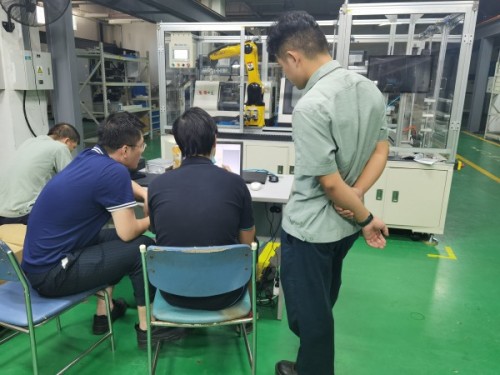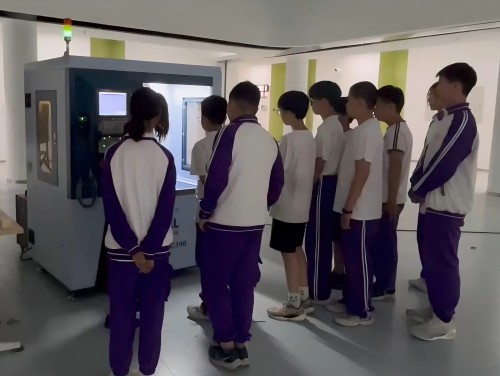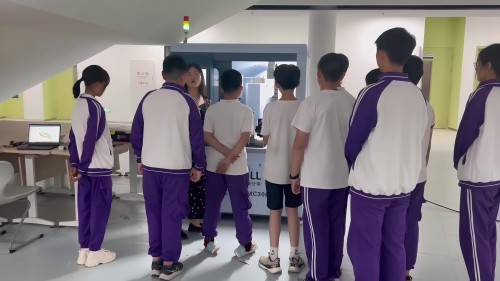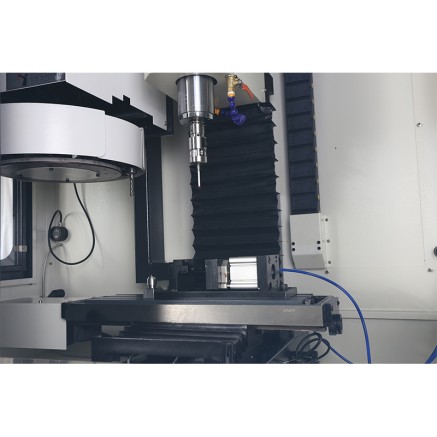Blog
Xendoll has 22 years of experience in the production of small machine tools. We will help you choose the suitable machine and share our experience in CNC machining with you.
 Nov 21, 2024
Nov 21, 2024
 Xendoll
Xendoll
 1025
1025
With the rapid development of digital manufacturing technology, maker spaces have become ideal environments for innovators, designers, engineers, and students to experiment with their ideas. Among the key tools in these spaces, the 3-axis CNC (Computer Numerical Control) machining center plays an essential role. It is widely used in various courses and maker activities. The 3-axis CNC machining center, with its ability to precisely machine various materials, supports efficient, customized production and has become an indispensable tool in maker spaces.
This article explores the specific applications of the 3-axis CNC machining center in maker spaces, focusing on its role in maker courses and activities, and analyzing its value and impact through real-world scenarios.

A 3-axis CNC machining center is a type of equipment that uses computer programming to automate the machining process. It can precisely cut, mill, carve, and drill materials in three-dimensional space, typically applied to metals, plastics, wood, and other materials. The term "3-axis" refers to the three linear axes—X, Y, and Z—along which the tool can move independently, providing high precision and flexibility.
In maker spaces, the 3-axis CNC machining center is more than just an industrial manufacturing tool or prototyping machine. It serves as an ideal environment for creative exploration, technical learning, and interdisciplinary collaboration. Most maker spaces are equipped with advanced CNC systems and powerful CAD (Computer-Aided Design) software, enabling a seamless connection from design to production.

Basic Operation and Programming Courses
Many maker spaces offer courses specifically designed to teach the basics of operating a 3-axis CNC machining center. For beginners, these courses cover fundamental topics such as machine setup, material loading, and understanding G-code (the CNC programming language) to control the machine. Through these courses, learners gain the essential skills to operate CNC machines, laying the foundation for more complex operations and projects.
For instance, in a basic CNC operation course, students might start by practicing simple milling or carving tasks, progressively learning how to design 2D shapes and convert them into physical objects through CNC machining. These hands-on lessons combine traditional craftsmanship with digital technology, helping students understand the principles of CNC machining and develop their skills in a practical setting.

Advanced CAD/CAM Design and Machining Courses
For more advanced makers, courses are available that focus on the application of CAD (Computer-Aided Design) and CAM (Computer-Aided Manufacturing) software. These courses guide students in designing 3D models with software and then importing those designs into the CNC machining center for manufacturing.
In these courses, students learn how to create complex 3D models, select appropriate materials and tools, and optimize machining paths to increase efficiency and reduce material waste. Additionally, the courses cover how to calibrate CNC machines and fine-tune machine performance to ensure smooth machining processes and precise final products.
For example, in an advanced product design course, students may be tasked with designing a custom mechanical part or artistic sculpture and using the 3-axis CNC machining center to fabricate it. Such courses not only hone students' technical abilities but also foster innovative thinking and problem-solving skills.
Interdisciplinary Creative Courses
Maker spaces typically encourage interdisciplinary creation and collaboration, and the 3-axis CNC machining center plays a significant role in these courses. For example, in a course that combines art and engineering, students may use the CNC machining center to create pieces that are both functional and artistic—such as designing a mechanical part that also serves as a piece of sculptural art.
These interdisciplinary courses help students develop a broad set of skills and encourage collaboration across different fields. In maker spaces, artists work with engineers, designers work with fabricators, and such collaborations turn the CNC machining center into a tool that enables creative ideas to transcend disciplinary boundaries.
Maker Workshops and Innovation Labs
Maker workshops are a common activity format in maker spaces, and the 3-axis CNC machining center plays an important role in these workshops. In a typical maker workshop, participants focus on a specific theme and use the CNC machining center to bring their ideas to life. These workshops provide hands-on experience and encourage participants to share knowledge, ideas, and insights with each other.
For example, in an eco-friendly maker workshop, participants may use reclaimed materials and CNC machining to design and create sustainable products such as furniture, lamps, or decorative items. During this process, makers not only apply their CNC skills but also address real-world challenges, which enhances their design thinking and problem-solving abilities.
Maker Competitions and Challenges
Many maker spaces organize competitions centered around the use of 3-axis CNC machining. These competitions typically focus on a specific theme, such as "smart home design" or "mechanical art installations." Participants are tasked with using the CNC machining center to create products or projects that align with the theme. These challenges test participants' technical skills and foster innovative thinking.
For example, one common maker competition involves designing and creating the most innovative mechanical device using the CNC machining center. Participants must fabricate a device that performs a specific function, and the appearance and creativity of the design are crucial to the judging process. These competitions provide a platform for makers to showcase their talents and encourage friendly competition, while also facilitating knowledge exchange and community building.
Collaborative Projects and Cross-Disciplinary Collaboration
In maker spaces, the 3-axis CNC machining center also fosters collaboration across different disciplines. Whether it's an engineer working with an artist or a designer collaborating with a fabricator, the CNC machining center enables cross-disciplinary creation. This collaboration helps to merge technical and artistic skills, pushing the boundaries of innovation.
For example, a team of engineers might collaborate with artists to use the CNC machining center to create a dynamic sculpture or a complex mechanical installation. These collaborative projects not only highlight the versatility of CNC machining but also promote the exchange of ideas and knowledge across different fields, resulting in unique and groundbreaking outcomes.
As maker culture continues to grow, the role of 3-axis CNC machining centers in maker spaces will only expand. With advancements in technology and the increasing accessibility of CNC equipment, maker spaces will continue to evolve as hubs for creativity, innovation, and hands-on learning. In the future, CNC machines will become even more user-friendly, with improved performance, smarter automation, and faster processing capabilities. This will enable makers to achieve more complex, intricate, and customized designs more efficiently.
Moreover, as educational resources in maker spaces grow, the 3-axis CNC machining center will become an even more essential learning tool for emerging makers. It will help them excel in digital fabrication, innovation design, and personalized manufacturing, further advancing the maker movement globally.

The 3-axis CNC machining center is not only a crucial tool in maker spaces but also an essential platform for innovation, education, and collaboration. By integrating with a variety of courses and activities, it provides makers with the opportunity to realize their creative ideas, showcase their skills, and solve real-world problems. As technology continues to evolve and the maker culture expands, the 3-axis CNC machining center will continue to play a pivotal role in fostering creativity, pushing technological boundaries, and driving innovation within maker spaces.For more product details, please click the link below:VMC300-3Axis



 Show all our samples
Show all our samples
 Provide you with a free quote
Provide you with a free quote
 Answer all the questions you may have
Answer all the questions you may have
 Guided installation and other options
Guided installation and other options